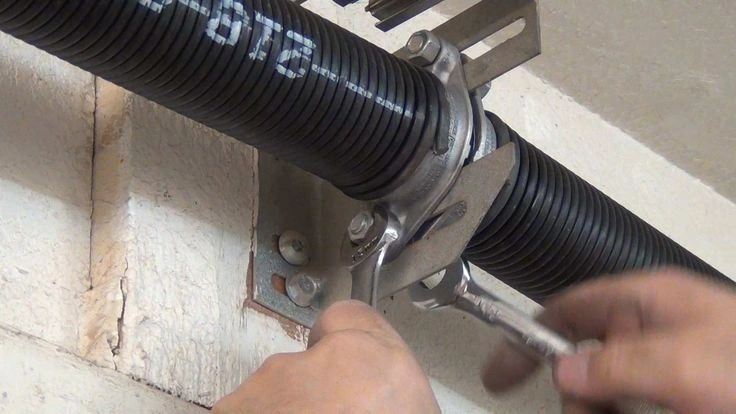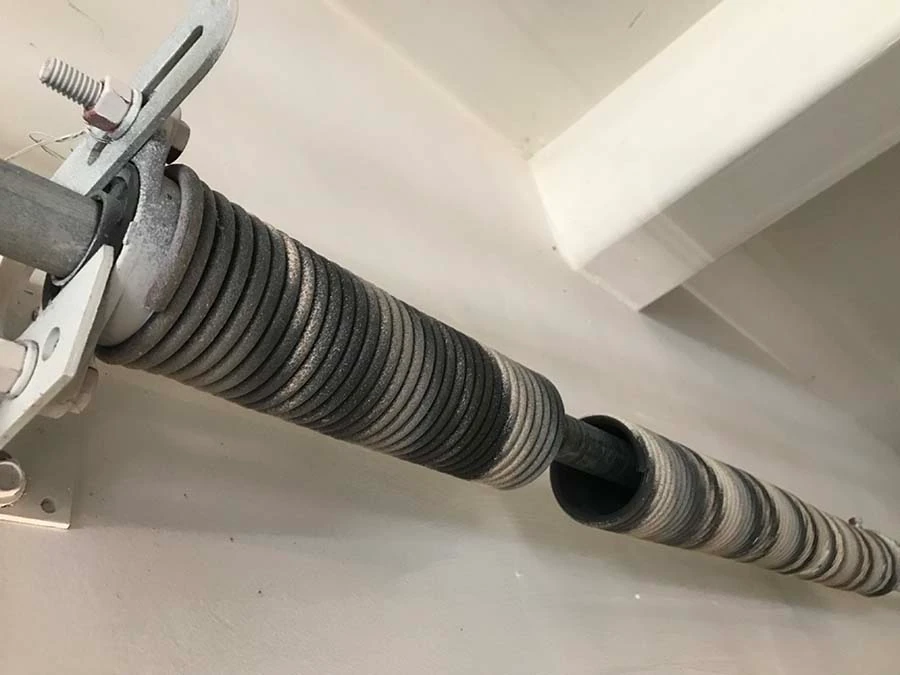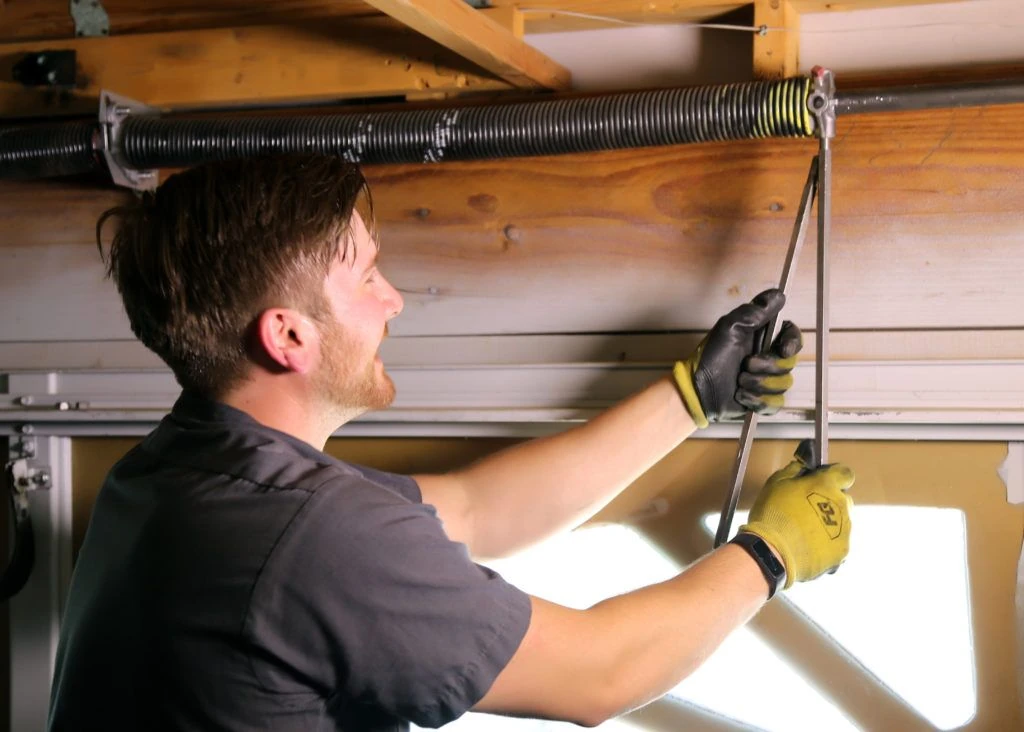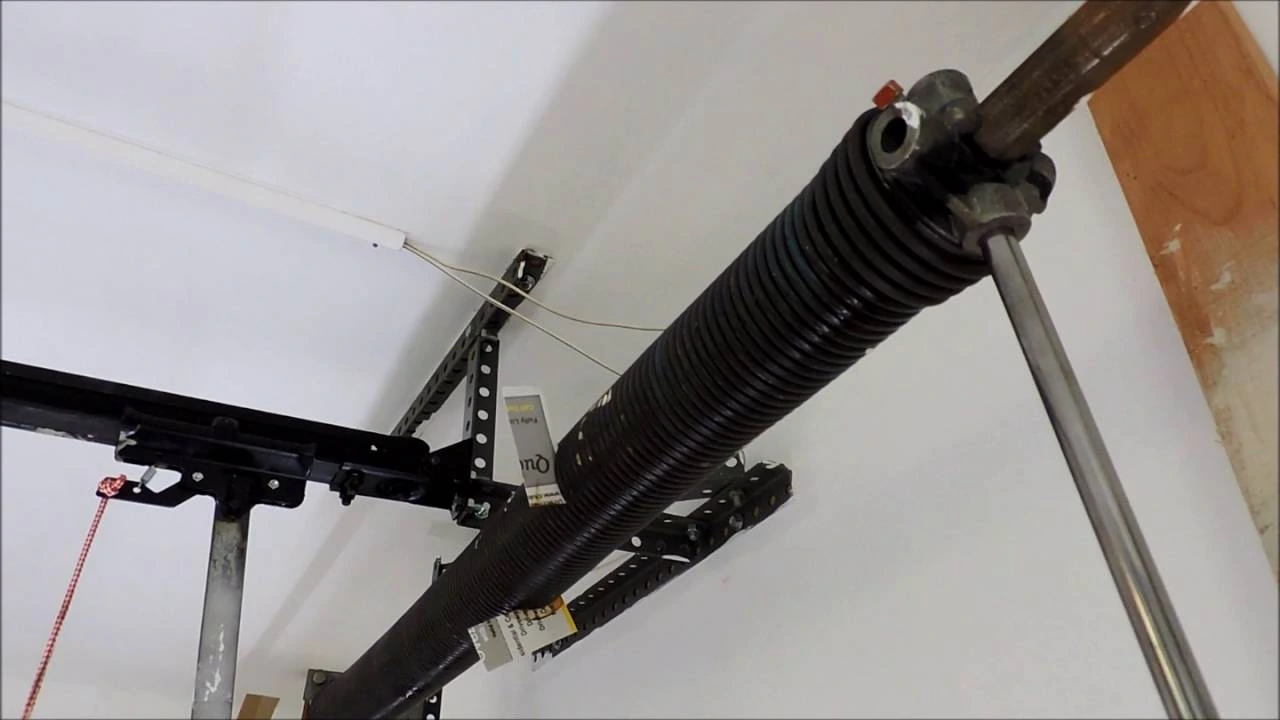A new garage door can really improve how your home looks and makes it easy to get into your garage. However, parts like the torsion springs, which help lift and lower the door, can get worn out over time.
It is important to understand how these springs work. You should also notice signs that they may be failing. Knowing what to do for repairs or replacements is key to keeping your garage door rust free and working well.
Key Takeaways
- Garage Door Torsion Spring Replacement is typically costs between $120 and $350, including professional installation.
- Because of the risks involved with high tension springs, most homeowners opt to hire a professional.
- Signs of a failing torsion spring include a crooked door, the door not opening properly, noisy springs, and a struggling garage door opener.
- Extension springs are another type of garage door spring; they are typically found on older tilt-up doors.
- When one torsion spring breaks, it is highly recommended that you replace both springs.
Understanding Garage Door Torsion Spring Replacement

If you look above your garage door, you may see a big spring system. This system is key to lifting your door. It is called the torsion spring system. These springs are tightly wound and store energy, which helps lift even a heavy garage door easily.
However, just like other hardworking parts, torsion springs don’t last forever. They are made for a certain number of cycles. One cycle means opening and closing the door. When they reach the end of their lifespan, they can break and may make a loud noise.
1. The Role of Torsion Springs in Garage Door Functionality
Torsion springs are the key part of your garage door system. When you close the door, these springs get tighter, storing energy. When you open the door, they unwind and let go of the stored energy, helping lift the door’s weight. This smart design makes your garage door move smoothly and in control.
The kind of spring you use is very important. Its size and tension must match the weight and size of your garage door. If you use the wrong spring, it can make the door opener work too hard, cause uneven movement, and wear out the whole system faster.
Having a working torsion spring is crucial for your garage door to operate safely and smoothly. When they function correctly, the door opens and closes without hassle, putting no extra stress on the opener or other parts.
2. Different Types of Torsion Springs and Their Uses
Not all torsion springs are the same. They come in different types to meet various garage door needs.
- Standard Torsion Springs: These are affordable and easy to find. They are the most common type used in many residential garage doors.
- Oil-Tempered Torsion Springs: These springs are made with a special heating process, giving them extra durability. They are less likely to rust and corrode, making them ideal for humid areas.
- Galvanized Torsion Springs: If you live near the coast or in a wet environment, galvanized springs are the best choice. Their zinc coating helps protect them from rust and corrosion.
The kind of garage door you have affects the types of springs you may need. Heavier, custom doors may need different springs than regular sectional garage doors. It’s smart to check with a professional to find the best fit for your garage door.
Identifying When Your Torsion Spring Needs Repair or Replacement

Think about your garage door not opening properly. It might move unevenly or make strange noises. These can be signs that your torsion springs are close to breaking.
If you ignore these warning signs, you could face bigger problems later on. This might mean a big repair bill or needing a full garage door torsion spring replacement.
3. Common Signs of Torsion Spring Failure
A broken spring can make a loud bang when it finally breaks. But, you can often see some signs that say it might fail soon. Look for these common signs:
- Crooked Door: If your garage door looks slanted or uneven when opening or closing, it may mean a spring is failing on one side.
- Difficult to Open or Close: If your door takes more effort to open or feels heavier than normal, the spring might be the issue.
- Noisy Springs: If you hear squeaking, groaning, or banging when using the door, it might be a sign that the springs are having trouble.
- Garage Door Opener Strain: If your garage door opener is having a hard time lifting the door or is suddenly reversing direction, this could mean the door is unbalanced because of a failing spring.
4. The Risks of Neglecting Torsion Spring Maintenance
Neglecting your garage door springs is like ignoring a small leak. What starts as a small issue can turn into a big problem. Although modern garage door systems have safety features, a broken torsion spring can cause:
- Sudden Door Closure: A broken spring can make the door fall suddenly. This can be a serious danger to anyone or anything below.
- Damage to Your Garage Door: The sudden drop of the door can harm the door itself and other parts like the opener and tracks.
- Expensive Repairs: Fixing a fallen door or a broken opener will cost much more than changing worn springs early.
Regular maintenance is important. Getting a professional to inspect your garage door system each year can spot spring problems before they become serious. This is a good way to ensure your garage door works well for a long time.
Step-by-Step Guide to Torsion Spring Repair
It’s great to let the best garage door insulation experts handle torsion spring repairs. However, knowing the basics can be useful.
Remember, torsion springs are under a lot of tension. Trying to fix them on your own is not a good idea unless you have the right training, tools, and experience.
5. Tools and Materials Needed for Torsion Spring Repair
Repairing a torsion spring is not just a simple DIY project. Doing it without the right tools and skills can be very dangerous. Here’s a look at what you might need:
- Winding Bars: These special tools help adjust the spring tension.
- Clamps: They keep the door steady while you work on the springs.
- Replacement Springs: Make sure to get the right size and type for your garage door.
- Safety Glasses and Gloves: Protecting yourself from injury is very important.
- Other Tools: You will also need sockets, wrenches, and pliers.
This list isn’t complete. You might need other tools based on your garage door’s needs. Remember, this information is just for reference. Always talk to a professional for any garage door spring repair or replacement.
6. Safety Precautions to Follow During Repair
While we suggest not doing DIY torsion spring repairs, the most important thing is safety. If you decide to go ahead, please follow these safety tips:
- Wear Safety Glasses: This will protect your eyes from flying debris or spring movement.
- Use Heavy-Duty Gloves: Thick gloves will keep your hands safe from sharp edges and possible pinching.
- Disconnect Power to the Opener: Make sure the opener won’t be turned on by mistake while you repair.
- Never Work Alone: Always have someone help you and be ready to get assistance if needed.
Do not try to fix a torsion spring without the right training. If you are unsure, contact a skilled garage door professional.
7. Repairing a Garage Door Torsion Spring: A DIY Approach
WARNING: A garage door torsion spring replacement is VERY DANGEROUS. It should ONLY be done by trained professionals.
The repair process includes letting go of the tension on the old springs. This is very risky if done wrong. Once that is done, the old springs are removed, and new ones are installed. Then, they need to be wound carefully to the right tension. If anything, like wire size or installation, is off, it can lead to big problems.
This section is just for information and is not a guide for homeowners. Remember, garage door torsion springs replacement are under a lot of tension. Even small mistakes can have serious results.
Professional Garage Door Torsion Spring Replacement Services

When you deal with garage door torsion springs replacement, safety should always come first. Hiring a professional may cost more than doing it yourself, but it gives you important peace of mind.
Experts know how to find the problem and fix it right. This reduces the chance of future issues and keeps your garage door safe and working well for a long time.
8. When to Choose Professional Over DIY Replacement?
Some home repairs are good for DIY projects. But garage door torsion spring replacement is not one of them. Here are some reasons why getting a professional to handle it is the best choice:
- Safety First: Torsion springs hold a lot of energy. A single mistake while trying to fix it yourself can lead to serious or even deadly injuries.
- The Right Expertise: Professional garage door technicians have special training to work with torsion springs safely. They know how to find problems, pick the right parts, and install them correctly.
- Warranty Protection: Good garage door service companies offer warranties on their parts and labor. This gives you peace of mind, knowing you are protected if any issues pop up after the repair.
Although labor costs matter, the safety and skills a professional brings are worth the investment.
9. What to Look for in a Professional Service Provider?
Choosing the right person for your garage door torsion spring replacement is important. Here are some qualities to look for in a service provider:
- Experience and Reputation: Select a company that has a good history and positive reviews from customers.
- Licensing and Insurance: Make sure the company has the proper licenses, bonding, and insurance to keep you safe from any liability if accidents happen.
- Warranties: Ask about the warranties for both the parts and labor. A strong warranty shows they are confident in their work.
- Transparent Pricing: Request a clear, written estimate before starting to avoid surprises later.
- Professionalism and Communication: Pick a company that is quick to respond, communicates well, and treats your property with respect.
Don’t be afraid to ask for references or check online reviews before choosing.
Cost Considerations for Torsion Spring Repair and Replacement

Let’s be honest—cost is always important when thinking about home repairs.
Even though changing your torsion springs doesn’t cost as much as other home projects, knowing what affects the pricing can help you plan your budget better.
10. Factors Influencing the Cost of Torsion Spring Services
Several things affect the overall cost of fixing or replacing torsion springs:
- Type of Springs: The kind of torsion spring you need (like standard, oil-tempered, or galvanized) will influence the price. Higher quality springs usually cost more.
- Number of Springs: Most garage doors have two torsion springs. It is best to replace both at the same time, even if just one is broken.
- Labor Costs: Labor is a big part of the total cost. It can change based on how hard the job is and where you live.
- Additional Repairs: If other parts are worn out, like cables, drums, or rollers, these will also increase the bill.
To get an average cost, ask for quotes from different reputable companies.
Also Read: Garage Door Stile: What It Is and Why It Matters – 5 Important Facts
11. Saving Money on Garage Door Torsion Spring Replacement Without Compromising Quality
While safety and quality are very important, you can still save money on garage door torsion spring replacement:
- Regular Maintenance: Just like your car, your garage door needs regular care. Lubricating your springs and checking your garage door system every year can help your springs last longer. It can also catch small problems before they turn into big, expensive issues.
- Bundle Repairs: If your garage door needs extra work (like new rollers or cables), ask your technician about discounts for fixing several issues at once.
- Get Multiple Quotes: Don’t just go with the first quote you find. Reach out to different garage door torsion spring replacement companies. Compare their prices to make sure you’re getting a good deal for the quality service you want.
Always remember, the cheapest choice isn’t always the best, especially when it comes to your safety.
Conclusion
It is important to understand how to keep your garage door torsion springs replacement in shape. This helps ensure that your garage door works smoothly and stays safe. Checking the springs regularly and fixing or replacing them on time can help avoid risks and expensive repairs. Whether you want to do it yourself, or hire professionals, always focus on safety and use the right tools.
By knowing the common signs of torsion spring problems and asking for help when needed, you can make your garage door last longer and keep it working well. Remember, taking care of your garage door system before issues arise is key.
Frequently Asked Questions
1. How often should torsion springs be replaced?
Torsion springs last around 10,000 cycles, typically 7 to 15 years, depending on usage. If they show wear or are nearing their limit, have a professional check them.
2. Can I replace a garage door torsion spring by myself?
It’s possible but not recommended. Torsion springs are under high tension and can cause serious injuries. It’s safer to call a professional.
3. What are the signs that my garage door torsion spring needs immediate attention?
Signs include a loud bang, uneven or heavy door, excessive noise, and the garage door opener struggling to lift the door. These indicate a safety risk.
4. How much does it cost to replace a torsion spring on a garage door?
Costs range from $120 to $350+, depending on the spring type, door size, location, labor, and additional repairs.
5. Is it safe to replace a torsion spring on a garage door?
No, it’s dangerous due to high tension. Only trained experts should handle Garage door torsion spring replacement to avoid injury.
6. How do I know what size torsion spring to use for my garage door?
The right spring depends on the door’s weight, height, and lift system. A professional should measure and select the correct one to ensure safety and proper function.

